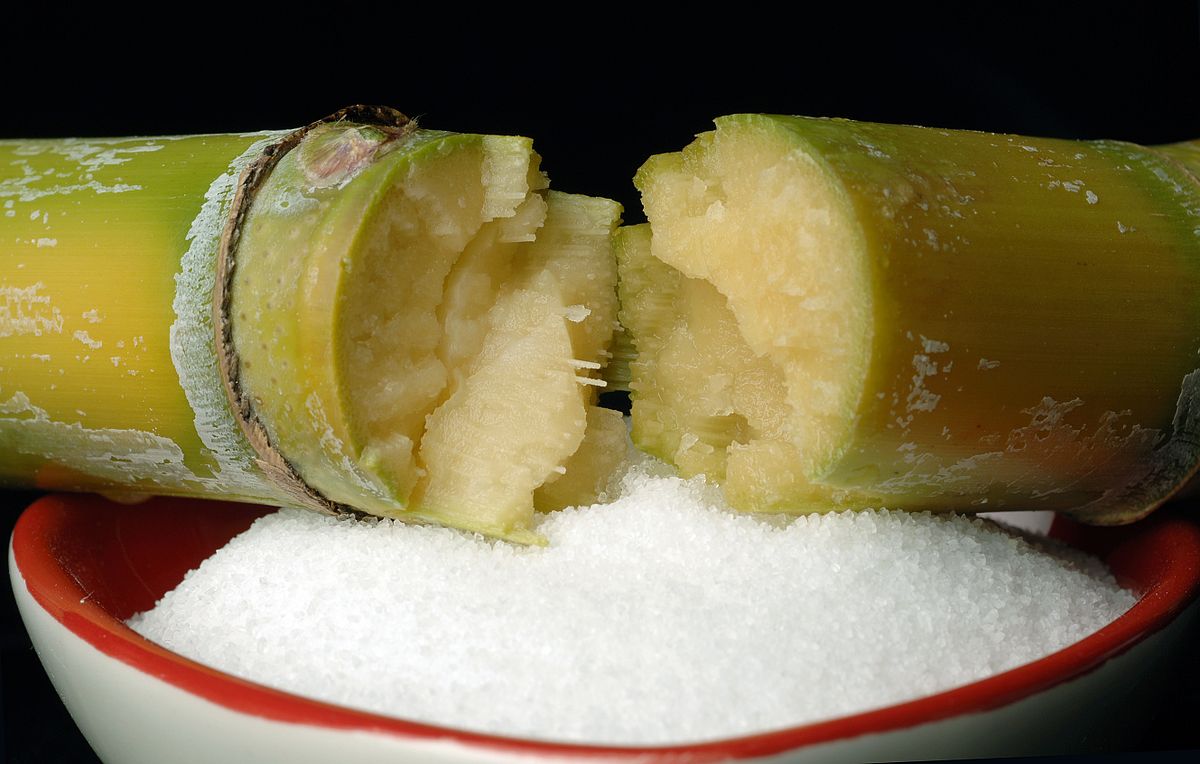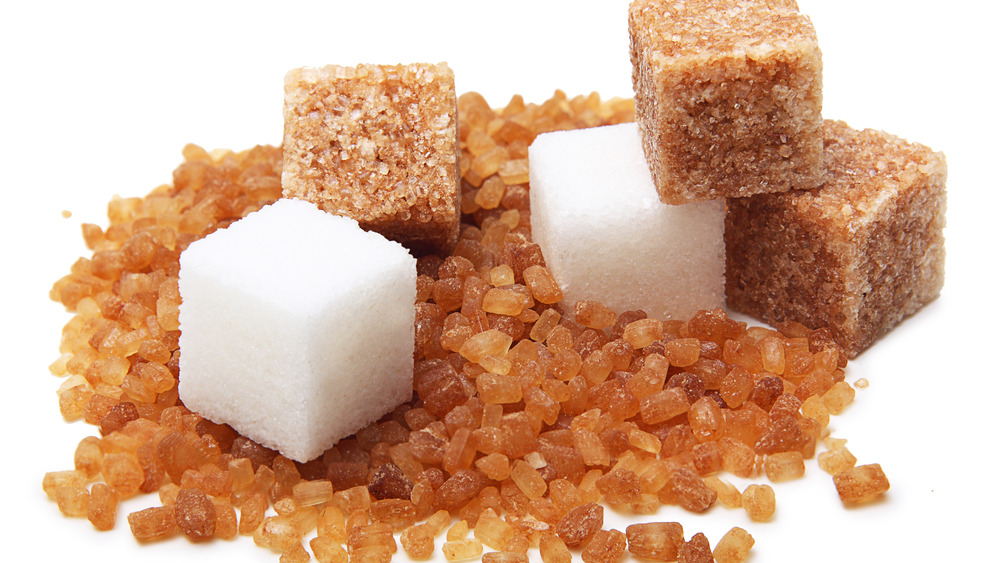Advanced Cane Sugar Processing: Enhancing Performance and Sustainability
Advanced Cane Sugar Processing: Enhancing Performance and Sustainability
Blog Article
Discovering the Comprehensive Steps Associated With Walking Stick Sugar Handling From Harvesting to Improvement
The process of walking stick sugar production encompasses a series of intricate actions, beginning with the cautious harvesting of sugarcane and finishing in the improvement phases that make sure the last item fulfills sector criteria. Each phase, from the extraction of juice to the filtration and condensation procedures, plays an essential role in determining the quality and character of the sugar. Comprehending these stages not just highlights the complexity of sugar manufacturing however likewise raises important concerns about efficiency, sustainability, and advancement in the industry. What implications do these elements have for future methods?
Gathering Sugarcane
Gathering sugarcane is a vital step in the walking cane sugar handling chain, as it directly influences the top quality and yield of the end product. Appropriate timing and techniques are essential throughout this phase to guarantee ideal sugar content and minimize losses. Generally, sugarcane is gathered when it reaches maturity, typically 12 to 18 months after planting, identified by a high sucrose concentration.

Post-harvest, the sugarcane must be processed quickly to avoid sucrose deterioration. Preferably, harvested walking stick ought to be moved to processing facilities within 24 hours to preserve sugar top quality. For that reason, reliable logistical planning is vital to keep the integrity of the harvested plant throughout the supply chain.
Removal Refine

The smashed cane is subjected to a series of pressing operations to make best use of juice healing. Normally, warm water is splashed onto the smashed walking cane, creating a countercurrent flow that assists dissolve the sugar while additionally aiding in the extraction procedure. The juice gathered from this procedure has not just sugar however additionally numerous organic compounds and pollutants.

To improve extraction performance, some facilities may use diffusion approaches, where the sugarcane is saturated in hot water, allowing the soluble sugars to diffuse into the fluid. The resulting juice, rich in sucrose, is after that directed to subsequent processing phases, laying the structure for filtration and improvement. The extraction procedure is therefore essential in determining the top quality and return of the last sugar product.
Purification Strategies
The purification methods utilized in cane sugar handling are essential for changing the raw juice into a high-grade sugar item. These techniques largely intend to get rid of impurities, such as soil, plant materials, and inorganic compounds, which can adversely influence the end product's flavor and shade.
One of one of the most typical filtration strategies is clarification. This procedure involves adding lime and warmth to the raw juice, which assists in the coagulation of impurities. The resulting precipitate is after that removed through sedimentation or filtration, producing a clearer juice. Furthermore, the use of phosphoric acid can improve the information procedure by more binding pollutants.
One more considerable strategy is carbonatation, where carbon dioxide is presented to the cleared up juice. This reaction creates calcium carbonate, which records continuing to be contaminations and advertises their removal.
Furthermore, activated carbon treatment might be put on adsorb any type of staying colorants and organic contaminations, guaranteeing a much more refined item. The mix of these approaches successfully prepares the sugar juice for subsequent actions in the refining procedure, setting the stage for the manufacturing of premium walking cane sugar.
Crystallization Methods
After the filtration phase, the following crucial step in cane sugar processing entails condensation techniques, which play a critical function in transforming the cleared up juice into strong sugar. This procedure generally utilizes 2 main techniques: spontaneous condensation and controlled formation.
In spontaneous formation, supersaturated sugar services are enabled to cool down normally, causing the development of sugar crystals gradually. This technique is simpler but might result in uneven crystal dimensions and reduced purity degrees. On the various other hand, regulated formation is a more precise method where temperature level, seeding, and concentration agents are carefully handled. This approach permits the consistent development of sugar crystals and greater purity.
Throughout condensation, the clarified juice is focused through evaporation, boosting its sugar content until it gets to supersaturation. As soon as this point is accomplished, either technique why not try this out can promote the crystallization process. Cane Sugar Processing. The resultant sugar crystals are after that divided from the remaining syrup with centrifugation
Eventually, the option of condensation technique affects the high quality, size, and purity of the final sugar product, making you could try this out this action essential in the overall walking stick sugar processing procedure.
Refinement and Packaging
Exactly how can the pureness and top quality of cane sugar be even more improved after formation? The refinement procedure plays a critical role in achieving top quality cane sugar. Following condensation, sugar undertakes an extensive washing to eliminate pollutants and recurring molasses. This is usually achieved making use of cozy water or vapor, which helps dissolve and extract undesirable components while maintaining the sugar crystals.
Following, the sugar goes through a procedure called centrifugation, where it is rotated at high rates to separate the detoxified sugar crystals from the remaining fluid. After centrifugation, the sugar is usually more fine-tuned with a technique called carbonization or phosphatation, which utilizes triggered carbon or phosphoric acid to eliminate color and off-flavors.
Once improved, the sugar is dried out to attain the wanted dampness content, making certain that it stays steady during storage space and transportation. The last action entails packaging the refined sugar in moisture-proof and impermeable containers to preserve its top quality and protect against contamination. Cane Sugar Processing. Appropriate product packaging not just extends life span but also facilitates very easy handling and distribution, guaranteeing that consumers get sugar that meets the highest requirements of pureness and quality
Verdict
The extensive actions entailed in cane sugar handling, from the precise harvesting of sugarcane to the detailed refinement and product packaging phases, underscore the significance of each phase in making certain high-quality sugar production. Optimum harvesting techniques, reliable removal approaches, and strenuous purification processes jointly add to the end product's purity and stability. The condensation and succeeding product packaging techniques better improve the integrity and service life of the sugar, highlighting the complexity and precision inherent in this vital farming sector.
The procedure of walking cane sugar manufacturing includes a series of complex steps, beginning with try this web-site the careful harvesting of sugarcane and culminating in the refinement phases that make sure the final product satisfies sector criteria. Preferably, gathered walking cane needs to be moved to processing facilities within 24 hours to protect sugar top quality.In spontaneous formation, supersaturated sugar solutions are enabled to cool down naturally, leading to the development of sugar crystals over time - Cane Sugar Processing. The refinement procedure plays a critical duty in attaining top notch walking stick sugar.The extensive steps involved in walking stick sugar handling, from the thorough harvesting of sugarcane to the intricate refinement and packaging phases, emphasize the importance of each stage in making certain high-quality sugar manufacturing
Report this page